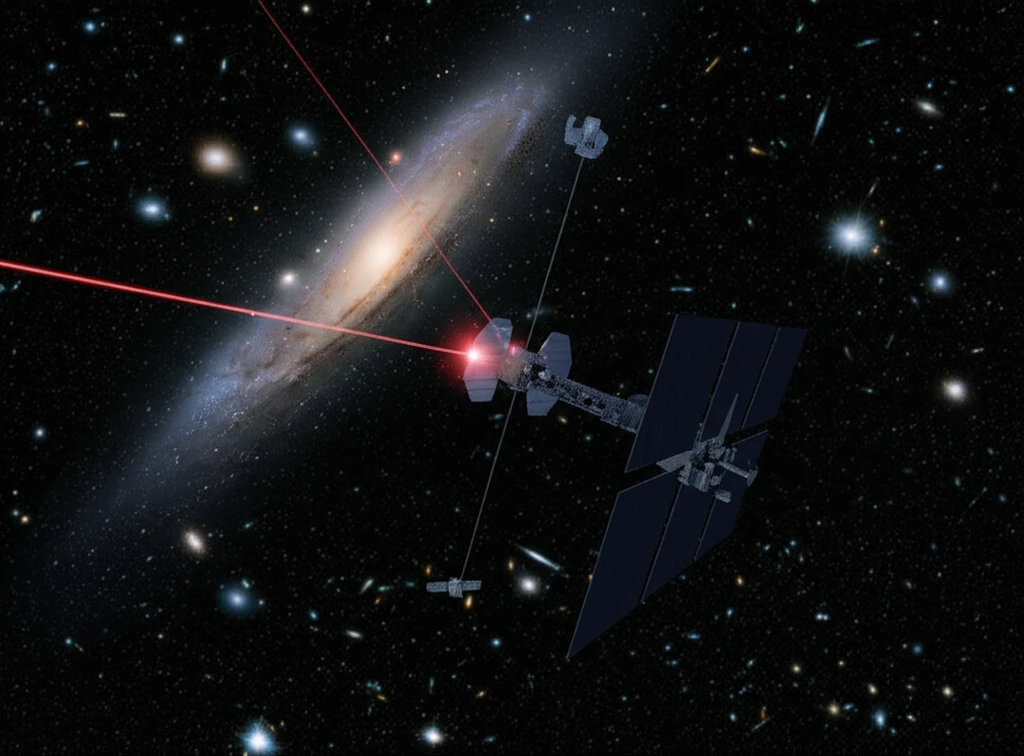
Hunting Gravitational Waves: LISA's Quest to Uncover Hidden Worlds in Neighboring Galaxies
"Explore how LISA, the Laser Interferometer Space Antenna, could revolutionize our understanding of double white dwarf binaries and their role in mapping the Local Group of galaxies."
The Laser Interferometer Space Antenna (LISA) is set to revolutionize our understanding of the universe by detecting gravitational waves from various cosmic sources. Among these, detached double white dwarf (DWD) binaries stand out as primary targets. These systems, consisting of two white dwarf stars orbiting each other, are not only abundant but also serve as crucial tools for probing binary evolution, understanding the formation channels of Type Ia supernovae (SNIa), and mapping the structure of our galaxy, the Milky Way.
Until now, predictions about the detectability of DWDs have largely focused on the Milky Way. However, a recent study sheds light on LISA's potential to detect these binaries in neighboring galaxies within the Local Group, including the Large and Small Magellanic Clouds (LMC and SMC), and even as far as Andromeda (M31). This breakthrough opens up exciting possibilities for studying stellar populations beyond our galactic borders.
This article delves into how LISA can identify DWDs in these distant galaxies, focusing on the shortest orbital periods and highest total masses, pinpointing potential double-degenerate SNIa progenitors. These binaries are particularly challenging to detect using traditional optical telescopes, making LISA an invaluable asset for determining SNIa merger rates across the Local Group.
Unlocking the Secrets of Gravitational Waves: How LISA Will Detect Double White Dwarfs?

LISA's ability to detect gravitational waves hinges on several key factors, primarily the characteristics of the DWD binaries themselves, such as their orbital periods and chirp masses. The chirp mass is a measure of the mass of the binary system that can be detected and is calculated as the mass of both objects in the system. The distance to these binaries also plays a critical role. The strength of the gravitational wave signal diminishes with distance, making closer binaries easier to detect.
- Orbital Period: LISA is particularly sensitive to DWDs with short orbital periods (less than 1 hour).
- Chirp Mass: Binaries with higher chirp masses produce stronger gravitational wave signals.
- Distance: DWDs in the Local Group, such as those in the LMC, SMC, and M31, are within LISA's detection range.
- Mission Duration: Longer observation times increase the likelihood of detecting weaker signals.
The Future of Gravitational Wave Astronomy: Detecting the Undetectable
LISA's mission extends beyond simply detecting DWDs. By precisely measuring the properties of these binaries, LISA will provide unprecedented insights into stellar evolution, binary formation, and the structure of galaxies within the Local Group. Moreover, LISA's ability to detect DWDs that are too faint for optical telescopes opens a new window into studying potential SNIa progenitors, helping us better understand the origins of these powerful cosmic explosions. With LISA, the universe is set to reveal its hidden gravitational secrets, transforming our understanding of the cosmos.
